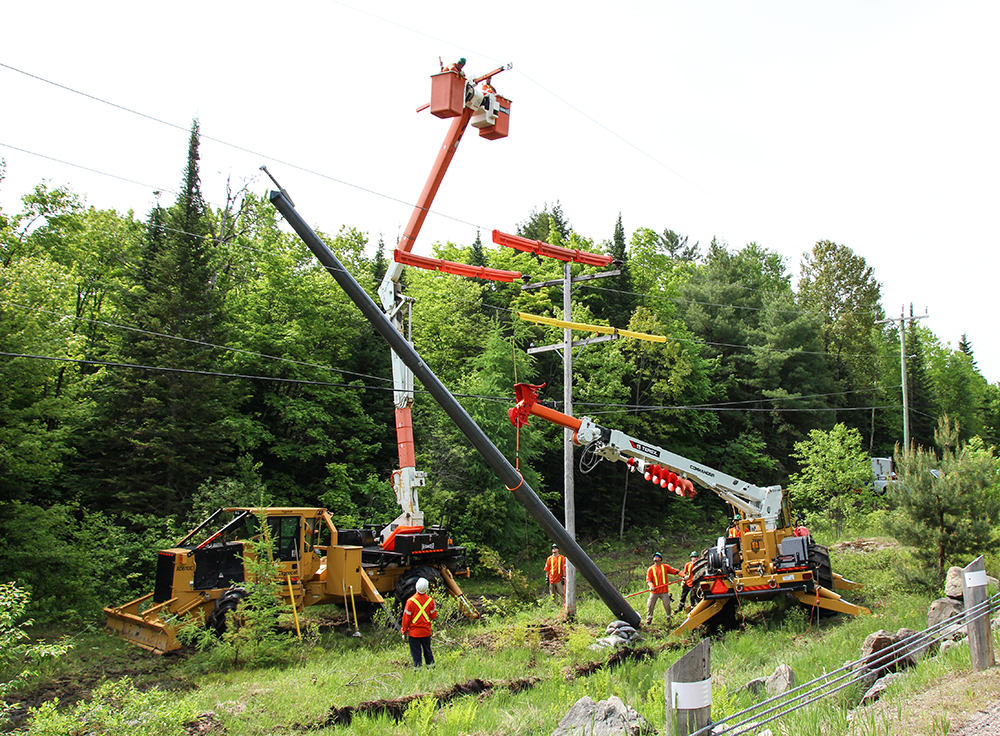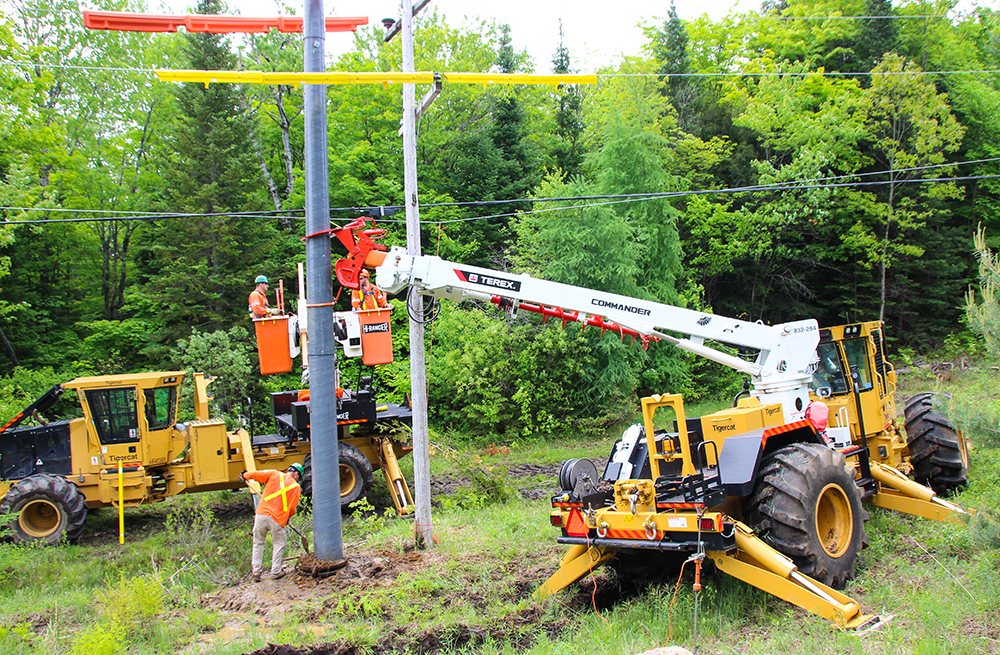31st July 2016
A pair of Tigercat utility carriers are used in delicate hydro pole replacement application.
The AD610C is designed to carry a variety of devices for off-road utility and industrial applications. The durable, reliable skidder-based prime mover can handle tough terrain and heavy duty cycles, easily accessing hard-to-reach job sites.
Two Tigercat AD610C utility carriers were recently observed replacing aging wooden hydro poles with new composite poles in an off-road setting. One machine was equipped with a material handler and double bucket aerial device and the second with a digger derrick attachment.

In with the new, out with the old. Two AD610C utility carriers work in tandem on a hydro pole replacement operation.
Working at heights with live high voltage lines is obviously a safety-focused and intricately complex operation. The aerial device unit is used to reach and place the protectors over the live lines, and using the jib attachment, to transfer the lines from the existing pole to the new pole. The machine is also used to remove the old poles. The jib attachment grabs and holds the lines out of the way while work is being performed.
The digger derrick unit also has a number of functions – boring the new holes, lifting the new poles up to the vertical position and setting the poles in place while workers on the ground fill in the base.

An AD610C equipped with a digger derrick holds the new pole in place.
Tigercat engineering performs a great deal of development work for each different type of attachment. One important factor is to maintain correct shipping heights when loaded on a lowboy. According to designer, Jason Schneider, “For each new application a specific rear chassis is designed to ensure that we mount the aerial device in the best location and to ensure easy access for the operator when running the device. Once we come up with a concept, we work closely with the end user to ensure the design will work.” Overall stability and placement of the outriggers are carefully examined and evaluated. Once each machine is built, it is delivered to the dealer where the machines are stability tested and certified prior to going into service.
Utility customers require robust and long lasting carriers. Basing the carrier on a skidder platform provides the required overkill in terms of durability and reliability. Customers also demand a machine that is easy to operate. “Operators are constantly cycling through different machines,” says Jason. “Having something simple and easy to operate is important. The hydrostatic drive and Turnaround® seat of the Tigercat carrier are very intuitive and easy to learn.”
Site disturbance is another important consideration. “The machines are often used in nature settings accessible by the public. “People don’t want to see big ruts in the ditches or right-of-ways when they are driving up to their weekend house,” says Jason. And more practically speaking, the soft footprint is very important when travelling over buried natural gas lines.
Other important factors include a suitably quick road speed to travel from one worksite to another and attention to detail. “Layout of controls in the cab, service access and the fact that all edges are rounded, so there is nothing sharp to get caught on – the attention to detail is what really sets our equipment apart from other brands,” explains Jason. “The customers want a turnkey machine that will not require a bunch of modifications after it is in service.”